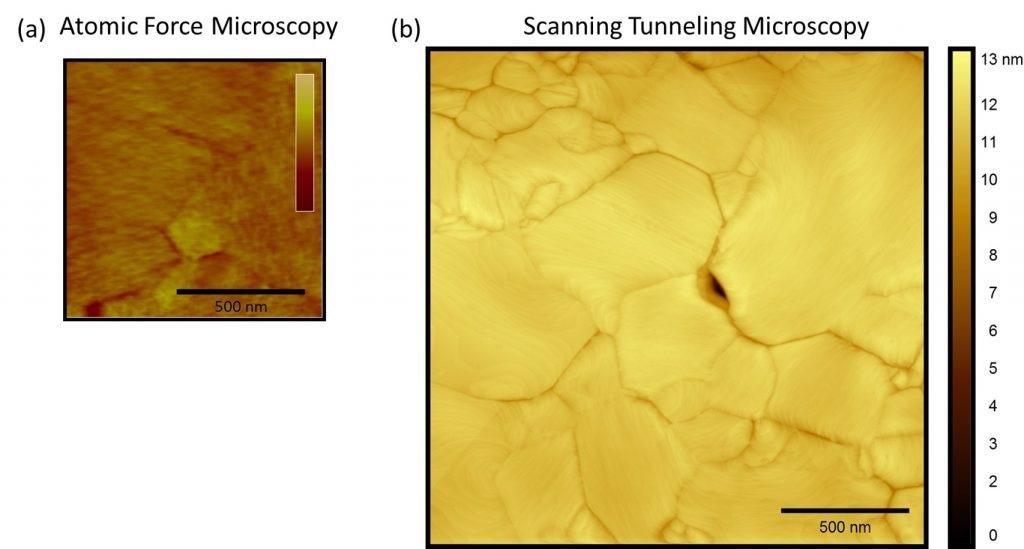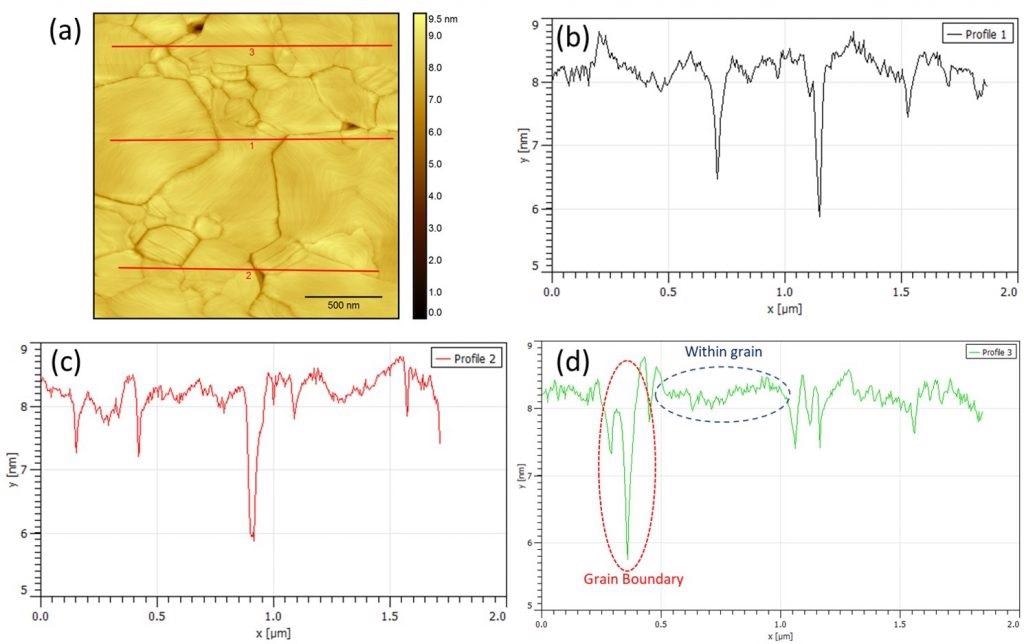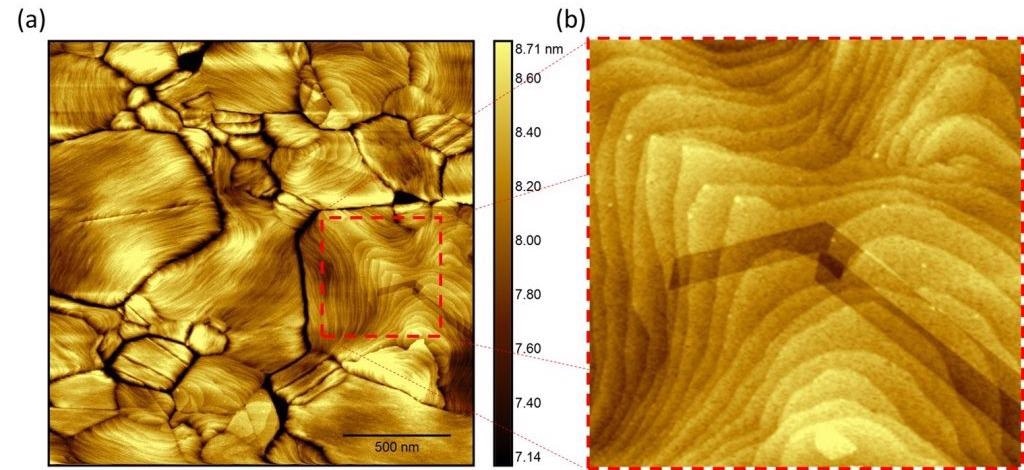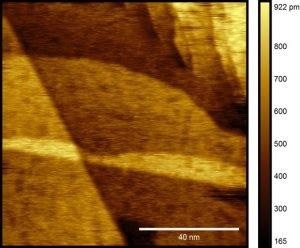High signal-to-noise imaging for AFM and STM applications is enabled by ultra-flat gold surfaces. These surfaces have been utilized to examine nano-plasmonic devices, single strands of DNA, 2D materials, self-assembled monolayers, and cell membrane monolayers, all because of their ultra-smooth topography.
Dr. Árpád Pásztor from the University of Geneva, in Switzerland, carried out scanning tunneling microscopy (STM) measurements of Ultra-flat Gold Surfaces by Platypus Technologies in a new imaging study. The samples were made up of freshly-stripped gold surfaces that were grown on silicon wafers (AU.1000.SWTSG).
These experiments were performed under ultra-high vacuum conditions at low temperatures (77 K). Kindly supplied by Dr. Pásztor and reproduced below with permission, the resulting high-resulting images show stunning new details on the ultra-flat gold surfaces by Platypus Technologies.
The initial inspection of the STM images reveals gold grains with dimensions of several hundred nanometers. A previous study using electron backscattering diffraction (EBSD) analyzed areas of 160 μm x 200 μm of the ultra-flat gold surface and measured the average diameter and area of gold grains as 2.96 μm and 3.64 μm2, respectively.
Inspection of the height scale, seen in Figure 1b, confirms that the surface has uniform height topography over the entire area analyzed. The whole surface has a similar height, and height variations are within one (1) nanometer, except for grain boundaries.

Figure 1. (a) AFM and (b) STM image of ultra-flat gold surface from Platypus Technologies. Image Credit: Platypus Technologies, LLC
Linear scans of the ultra-flat gold surface supply quantitative measurements of the surface height. A representative STM image and three height profiles from linear scans are shown in Figure 2.
This data reveals that the surface height variation is significantly less than 1 nanometer within each grain of gold and the decrease in height that corresponds to grain boundaries is only around ~1 – 2 nanometers. The thickness of the cell membrane is around ~4 nanometers.

Figure 2. (a) STM image of ultra-flat gold surface; red lines indicate position of linear scans. (b-d) Height profiles of three different linear scans. Note that the y-axis ranges from 5-9 nanometers, while the x-axis ranges from 0-2 micrometers. Within a gold grain, the height variation is much less than 1 nanometer. At grain boundaries, the height decreases by ~1-2 nanometers. Image Credit: Platypus Technologies, LLC
Next, as seen in Figure 3, the imaging study characterized nanometer-scale height variations of the gold surface within each grain. The images show that each grain is made up of numerous stacked terraces of gold.
Upon closer inspection of the images, it is revealed that the terrace-to-terrace height difference is ~0.2 nanometer, a value that is consistent with the within-grain height variation that was measured by the linear scans in Figure 2.

Figure 3. (a) High-resolution STM image of ultra-flat gold surface. (b) Zoom-in view of the image reveals terraces of gold. Image Credit: Platypus Technologies, LLC
Figure 4 presents a high-resolution STM image of a 100 nm x 100 nm area within a gold grain. Single terraces of gold can be seen clearly in this image, and the terrace at the center of the image measures around 3,000 nm2.
It can also be determined that the terrace-to-terrace variation in height is in the order of a few hundred picometers. In contrast, the diameter of gold atoms in metallic bonding is 288 picometers.
It can be hypothesized that each terrace corresponds to a uniform plane of gold atoms, and the sheets seen within each grain (Figures 3 and 4) correspond to atom-thick terraces of gold.

Figure 4. High-resolution STM image of ultra-flat gold surface reveals uniform gold terraces. Image Credit: Platypus Technologies, LLC
Conclusion
Exquisite detail of a surface is revealed by using high resolution STM images of ultra-flat gold surfaces. The images show large grains of gold with uniform surface roughness over the complete analyzed area and each grain is made up of gold terraces possessing single-atom thickness.

This information has been sourced, reviewed and adapted from materials provided by Platypus Technologies, LLC.
For more information on this source, please visit Platypus Technologies, LLC.